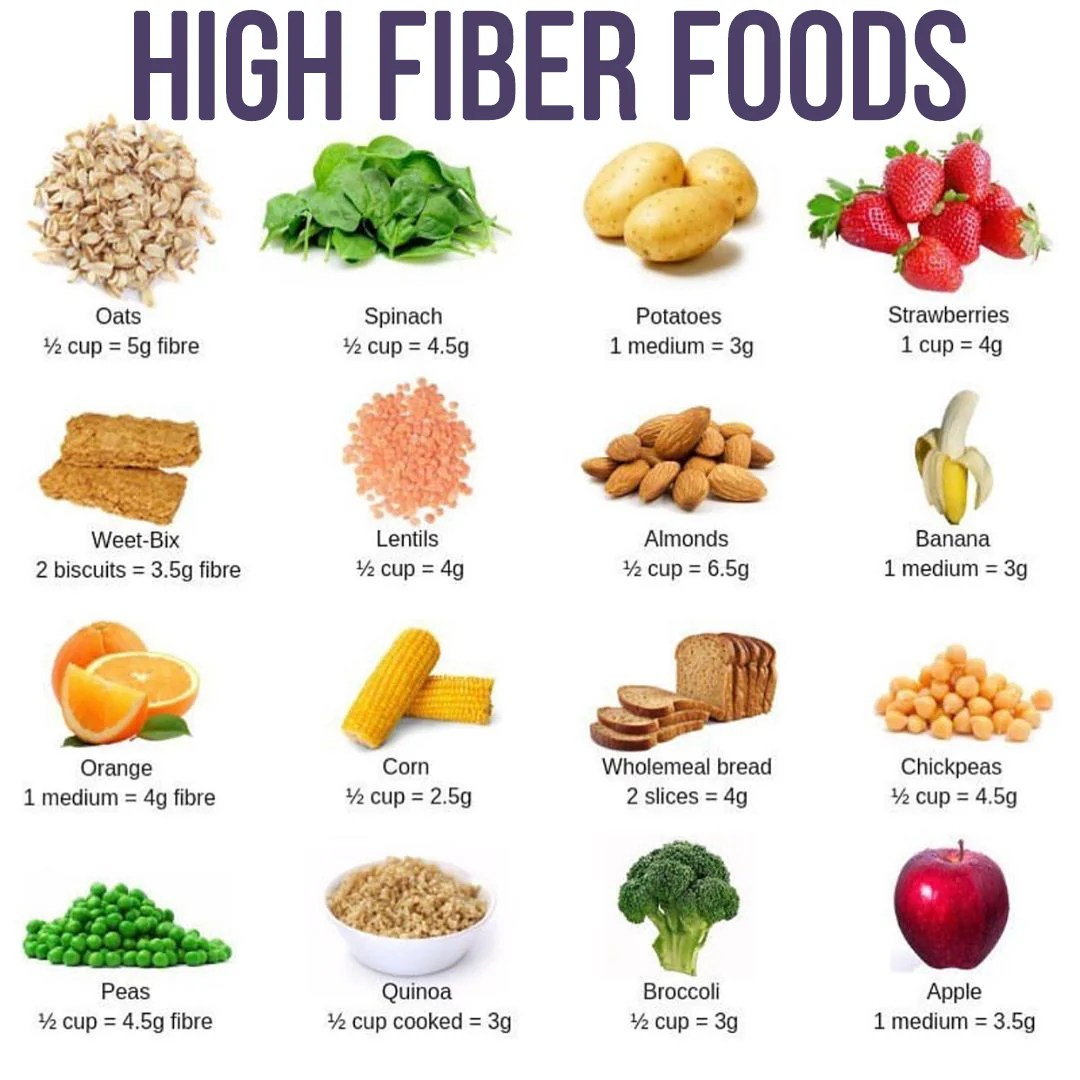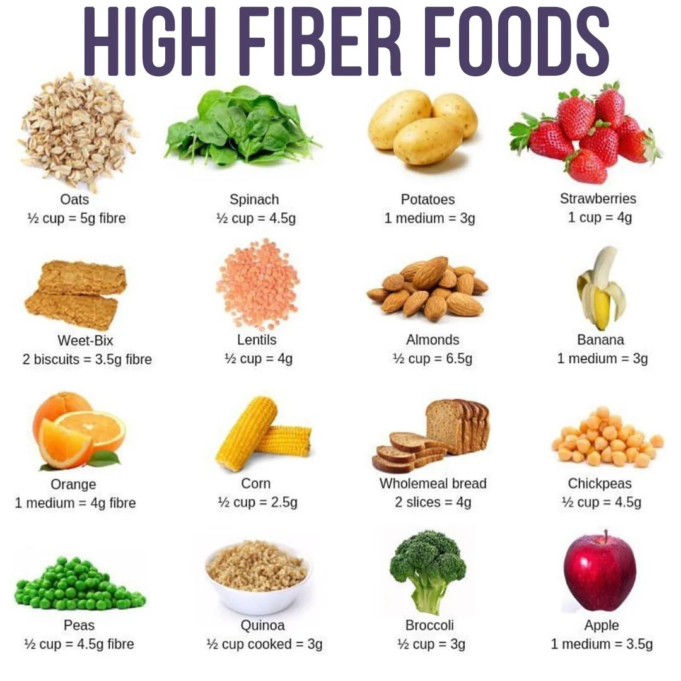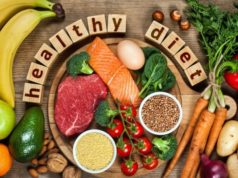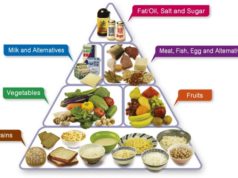How to get more fiber in your diet is a question many of us ask, especially when seeking ways to improve digestion, manage weight, or simply feel better overall. Fiber, a type of carbohydrate our bodies can’t digest, plays a crucial role in maintaining good health. It acts like a broom, sweeping out waste and keeping things moving smoothly in our digestive system. From regulating bowel movements to lowering cholesterol and blood sugar levels, fiber offers a wide range of benefits.
This guide will explore the different types of fiber, their benefits, and how to incorporate them into your daily meals. We’ll also discuss the importance of gradual fiber intake, provide practical tips for incorporating fiber into your diet, and debunk common myths about fiber supplements. By the end, you’ll be equipped with the knowledge and tools to make fiber a vital part of your healthy lifestyle.
Understanding Fiber: How To Get More Fiber In Your Diet
Fiber is a type of carbohydrate that the body cannot digest. It’s found in plant foods and plays a crucial role in maintaining a healthy digestive system and overall well-being.
Types of Fiber and Their Benefits
There are two main types of fiber: soluble and insoluble.
- Soluble fiber dissolves in water and forms a gel-like substance in the digestive tract. It helps lower cholesterol levels, regulate blood sugar, and promote feelings of fullness.
- Insoluble fiber does not dissolve in water and adds bulk to the stool. It helps prevent constipation, promotes regular bowel movements, and supports a healthy digestive system.
Recommended Daily Intake of Fiber
The recommended daily intake of fiber for adults is 25-38 grams. Children’s fiber needs vary based on age, but generally range from 19-38 grams per day.
High-Fiber Foods
A variety of foods are rich in fiber. Here are some examples from different food groups:
- Fruits: Apples, pears, bananas, berries, oranges, avocados
- Vegetables: Broccoli, Brussels sprouts, carrots, spinach, peas, beans
- Grains: Whole-wheat bread, brown rice, oats, quinoa, barley
- Legumes: Lentils, beans, chickpeas
- Nuts and Seeds: Almonds, walnuts, chia seeds, flax seeds
Incorporating Fiber into Your Diet

Increasing your fiber intake can be beneficial for your health, but it’s important to do it gradually to avoid digestive discomfort. Start by making small changes to your diet and gradually increase your fiber intake over time. This approach will allow your body to adjust and minimize the risk of bloating, gas, and other digestive issues.
Gradually Increasing Fiber Intake
Increasing fiber intake gradually is crucial to prevent digestive discomfort. Starting with a small increase and allowing your body to adjust is recommended. Here are some practical tips to incorporate more fiber into your diet without causing digestive issues:
- Start slowly: Add a few grams of fiber to your diet each day. This could mean adding a piece of fruit, a cup of vegetables, or a serving of whole grains to your meals.
- Drink plenty of fluids: Fiber absorbs water, so it’s essential to drink plenty of fluids throughout the day to prevent constipation.
- Choose high-fiber foods: Opt for whole grains, fruits, vegetables, legumes, and nuts, which are naturally high in fiber.
- Listen to your body: Pay attention to how your body reacts to increased fiber intake. If you experience discomfort, reduce your intake and gradually increase it again.
Sample Meal Plan
A well-balanced diet rich in fiber can be incorporated into your daily meals. Here is a sample meal plan that includes high-fiber options for breakfast, lunch, and dinner:
- Breakfast: Oatmeal with berries and nuts, whole-wheat toast with avocado and eggs, or a smoothie with spinach, banana, and chia seeds.
- Lunch: Salad with grilled chicken or fish, lentil soup, or a whole-wheat wrap with hummus and vegetables.
- Dinner: Baked chicken with roasted vegetables, vegetable stir-fry with brown rice, or vegetarian chili.
Fiber-Rich Snacks
Fiber-rich snacks can be a great way to increase your fiber intake throughout the day. Here are some options:
- Fruits: Apples, bananas, pears, berries, and oranges.
- Vegetables: Carrots, celery, cucumbers, bell peppers, and broccoli.
- Nuts and seeds: Almonds, walnuts, sunflower seeds, pumpkin seeds, and chia seeds.
- Popcorn: Air-popped popcorn is a low-calorie, high-fiber snack.
Fiber-Rich Foods
To increase your fiber intake, you can incorporate a variety of fiber-rich foods into your diet. These foods are naturally packed with fiber and offer a wide range of essential nutrients. Here’s a breakdown of some common fiber-rich food categories and their benefits.
Adding more fiber to your diet is a great way to improve digestion and overall health. It’s important to consider the impact of artificial sweeteners, especially if you’re following a ketogenic diet. You might wonder, can you drink diet soda on keto ?
While some keto dieters avoid them, others find them helpful for managing cravings. Ultimately, the best way to increase fiber is through whole foods like fruits, vegetables, and whole grains.
Fiber-Rich Food Categories
Here’s a table outlining common fiber-rich food categories, their examples, fiber content, and health benefits:
| Food Category | Examples | Fiber Content (per serving) | Health Benefits |
|---|---|---|---|
| Fruits | Apples, pears, bananas, berries, oranges, avocados | 2-6 grams | Support digestive health, regulate blood sugar levels, promote heart health, and provide essential vitamins and minerals. |
| Vegetables | Broccoli, spinach, carrots, Brussels sprouts, peas, sweet potatoes | 2-5 grams | Support digestive health, promote weight management, reduce the risk of chronic diseases, and provide essential vitamins and minerals. |
| Grains | Whole wheat bread, brown rice, quinoa, oats | 3-8 grams | Provide sustained energy, support digestive health, regulate blood sugar levels, and promote heart health. |
| Legumes | Beans, lentils, chickpeas, peas | 8-15 grams | Support digestive health, promote weight management, lower cholesterol levels, and provide essential protein and iron. |
| Nuts and Seeds | Almonds, walnuts, chia seeds, flax seeds, sunflower seeds | 2-5 grams | Provide healthy fats, support heart health, promote weight management, and offer a range of essential vitamins and minerals. |
Fiber and Digestive Health
Fiber plays a crucial role in maintaining a healthy digestive system. It acts like a natural broom, sweeping waste through your intestines and promoting regular bowel movements.
Fiber and Bowel Movements
Fiber, particularly soluble fiber, absorbs water and forms a gel-like substance in your digestive tract. This gel adds bulk to your stool, making it easier to pass.
- Consuming adequate fiber can prevent constipation by stimulating the muscles in your intestines to contract and move waste through your digestive system more efficiently.
- Regular bowel movements are essential for overall digestive health. They help eliminate waste products and prevent the buildup of toxins in your body.
Fiber and Cholesterol
Fiber, particularly soluble fiber, can help lower cholesterol levels.
- Soluble fiber binds to cholesterol in your digestive tract and prevents it from being absorbed into your bloodstream.
- Lowering cholesterol levels can reduce your risk of heart disease, a leading cause of death worldwide.
Fiber and Blood Sugar Control
Fiber, especially soluble fiber, can help regulate blood sugar levels.
- Soluble fiber slows down the absorption of sugar from your digestive tract, preventing spikes in blood sugar levels after meals.
- This can be particularly beneficial for people with diabetes, as it can help them manage their blood sugar levels and reduce their risk of complications.
Potential Risks of Consuming Too Much Fiber
While fiber is essential for good health, consuming too much fiber can have some negative effects.
- Excessive fiber intake can lead to bloating, gas, and diarrhea, especially if you’re not used to eating a high-fiber diet.
- It can also interfere with the absorption of certain nutrients, such as iron and zinc.
Staying Hydrated, How to get more fiber in your diet
It is important to drink plenty of water when increasing your fiber intake.
- Fiber absorbs water, and if you don’t drink enough fluids, you may experience constipation or other digestive problems.
- Aim to drink at least eight glasses of water per day, especially when you’re eating a high-fiber diet.
Fiber Supplements
Fiber supplements are a convenient way to increase your fiber intake if you’re struggling to get enough from your diet alone. They come in various forms, each with its own benefits and drawbacks.
Types of Fiber Supplements
Fiber supplements are broadly classified into two categories: soluble and insoluble fiber.
- Soluble fiber dissolves in water and forms a gel-like substance in your gut. This can help lower cholesterol levels and regulate blood sugar. Some common sources of soluble fiber include psyllium husk, oat bran, pectin, and guar gum.
- Insoluble fiber does not dissolve in water and adds bulk to your stool. This can help prevent constipation and promote regular bowel movements. Some common sources of insoluble fiber include cellulose, wheat bran, and lignin.
Choosing the Right Fiber Supplement
The best fiber supplement for you depends on your individual needs and preferences.
- Consider your dietary needs: If you’re struggling with constipation, an insoluble fiber supplement might be a good choice. If you’re looking to lower cholesterol or manage blood sugar, a soluble fiber supplement could be more beneficial.
- Look for supplements that are low in added sugars and artificial ingredients. Some supplements contain added sugars, which can negate the health benefits of fiber.
- Start with a low dose and gradually increase it as needed. Too much fiber too quickly can cause gas, bloating, and diarrhea.
- Talk to your doctor before taking any fiber supplements, especially if you have any underlying medical conditions.
Incorporating Fiber Supplements into Your Diet
Fiber supplements are typically available in powder, capsule, or tablet form.
- Powdered fiber supplements can be mixed with water, juice, or yogurt.
- Capsules and tablets are easy to swallow and can be taken with a glass of water.
- It’s important to drink plenty of fluids when taking fiber supplements. Fiber absorbs water, and not enough fluids can lead to constipation.
- Start slowly and gradually increase your fiber intake. This will give your body time to adjust and prevent digestive discomfort.
Fiber and Weight Management
Fiber plays a crucial role in weight management by promoting satiety, reducing calorie intake, and influencing the body’s metabolic processes.
Fiber and Satiety
Fiber contributes to weight management by promoting satiety, the feeling of fullness that helps regulate eating behavior. When fiber enters the digestive system, it absorbs water, expanding in volume and slowing down the rate at which food moves through the digestive tract. This extended digestion time signals the brain that the body is full, leading to a reduction in hunger and food cravings.
Closing Notes
Adding more fiber to your diet is a simple yet powerful step towards better health. By understanding the different types of fiber, their benefits, and how to incorporate them into your daily meals, you can unlock the numerous advantages fiber offers. Remember to increase your fiber intake gradually, stay hydrated, and consult with your doctor if you have any concerns. Embrace the power of fiber and enjoy the positive impact it can have on your overall well-being.
FAQ Guide
Can I get too much fiber?
While fiber is generally beneficial, consuming too much too quickly can lead to digestive discomfort, such as bloating, gas, and diarrhea. It’s best to increase your fiber intake gradually over time to allow your body to adjust.
What are some good sources of fiber for breakfast?
Oatmeal, whole-grain cereal, berries, chia seeds, and nuts are all excellent sources of fiber for breakfast. You can add these to your favorite yogurt or smoothie for a nutritious and filling start to your day.
Are fiber supplements necessary?
Fiber supplements can be helpful if you struggle to get enough fiber from your diet. However, it’s always best to prioritize getting fiber from whole foods whenever possible. Consult with your doctor before taking any supplements, especially if you have any underlying health conditions.
Adding more fiber to your diet is a great way to feel fuller for longer and support healthy digestion. While increasing your fiber intake can be a key part of a weight management plan, it’s important to consider all aspects of a healthy lifestyle.
You might be wondering if is running the best way to lose weight , but ultimately, finding activities you enjoy and can sustain is crucial for long-term success. Along with exercise, making sure you’re getting enough fiber through fruits, vegetables, and whole grains can help you feel your best on your weight loss journey.
Adding more fiber to your diet is a great way to improve your overall health and well-being. One way to incorporate more fiber is by following a clean diet plan , which often emphasizes whole, unprocessed foods rich in fiber.
By focusing on fruits, vegetables, legumes, and whole grains, you can easily increase your daily fiber intake and enjoy the numerous benefits it offers.
























